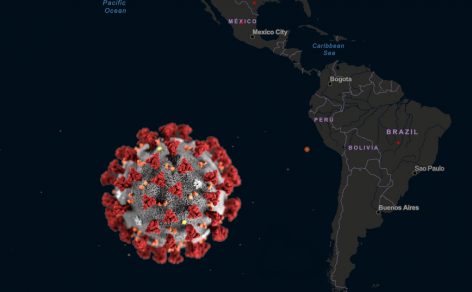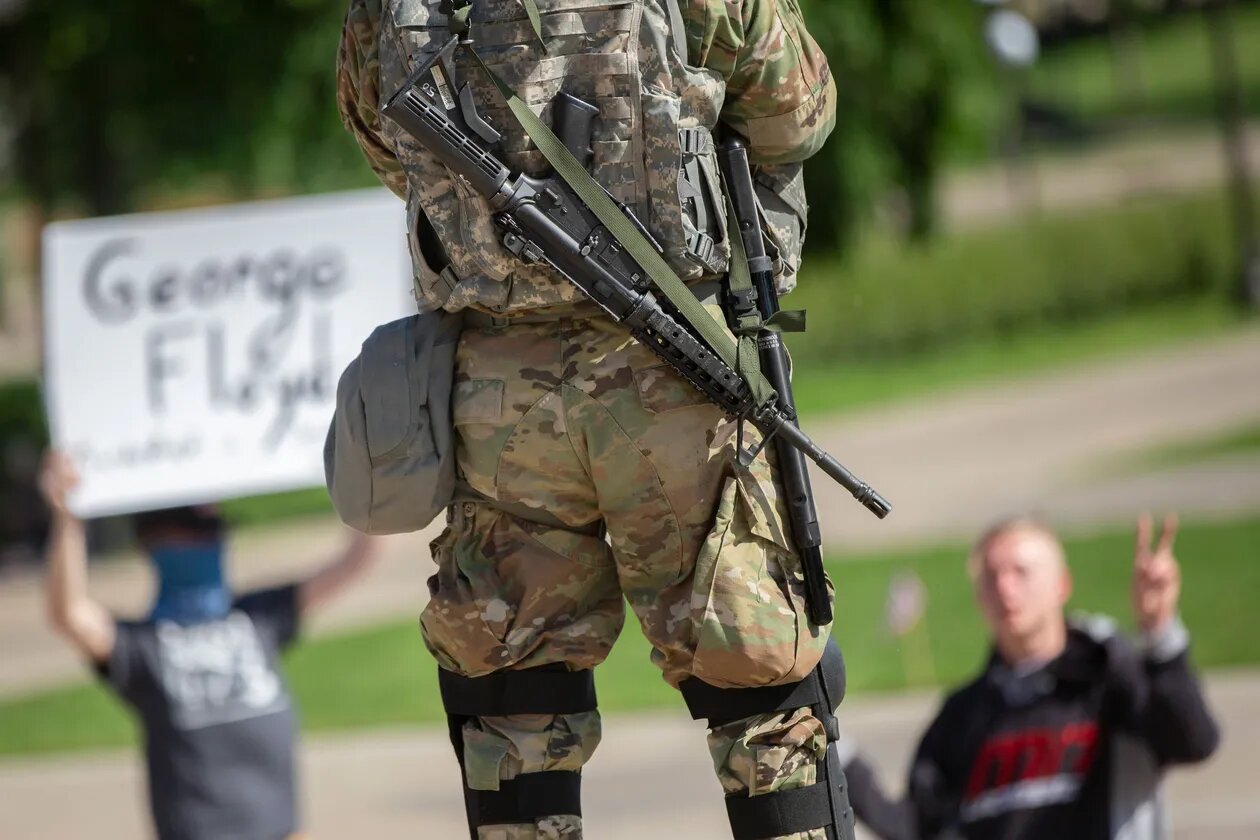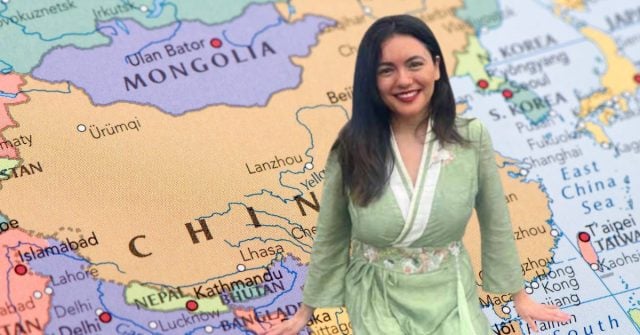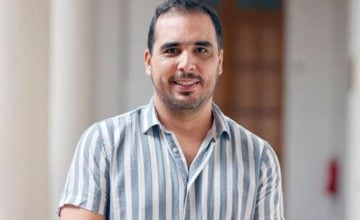Latin America faces its greatest challenge after three months of the arrival of the new coronavirus in a region that was already convulsed, mainly as a result of the marked economic and social inequalities that have worsened with the appearance of the pandemic and the mandatory confinements to try to contain the COVID-19 disease.
As the days go by and the uncontrolled behavior of the disease continues in many of the countries, especially in Colombia, Brazil, Peru, Ecuador and Chile, the challenges for the people of the region become more intricate, since the pandemic does not only affect the health of the population but it also has consequences in the employment and socioeconomic conditions of all and exacerbates poverty and misery in the historically most vulnerable sectors.
To all this is added a very important aspect for the regional economy, and it is the great dependence that the people of the region have on the informal sector of the economy, which in turn is threatened when it has against it a lethal health context and with a marked situation of political and institutional weakness.

In this regard, Ociel Alí López, sociologist, political analyst and professor at the Central University of Venezuela (UCV in Spanish), analyzed in a recent article written for Actualidad RT -where he addresses the situation in Latin America after the arrival of COVID-19- the current scenario of what could happen in a short term.
López points out that three months after the first positive case of COVID-19 in Latin America was verified, on February 26, 2020, the impact of the pandemic cannot yet be fully understood, much less compared to its effects in Europe or China. .
“Although the virus has been shown to be much less deadly here, its trajectory and the influence in time tends to last more, in a indefinite manner, than in the rest of the world, which raises doubts about how to confront it. The situation, which at the time generated panic, has only become more complex in the sanitary, political and governmental fields», explained Lopez.
He also maintains that the application of approaches designed in China or Europe may be weakened by the specific characteristics of Latin America, where there are fewer economic and sanitary tools to deal with it and also less experience in the viral field, as Africa has.

Latin America and the informal economy
López explains that in the midst of the pandemic, «perhaps for the governments of the region, the main challenge is to maintain for a long time the measures of confinement, quarantine and social distancing that the World Health Organization (WHO) recommended from the outset» .
Why is this the main challenge? López recalls that Latin America is «very dependent on daily informal work», so the already long confinement generates uncertainty and concern in families who depend on what they sell on a daily basis on the street or in the informal market.
The option of these families is not to stay at home, although the pandemic requires it, because if they are not infected with the virus, something worse will stalk them: hunger, poverty and even the street, because they will not be able to pay rents or basic services such as water, electricity or gas.
«The long weeks of the application of the measures of confinement are generating chronic economic fatigue amid processes of social impoverishment», adds López.
In his article, López cites an interview given to DW by Francisco González, professor at the School of International Studies at Johns Hopkins University, who compares the region with China and highlights that in Latin America, people are rebellious, very contrary to Asian countries.
In China “there is a tradition of obeying the State (…) In general, Eastern cultures have a great deference in their relation with authority. In Latin America we are the opposite. States are not as effective in sanctioning», says González.
In Brazil, Mexico, Colombia or in the Caribbean countries, although the State sends the right message, there is not as much capacity to implement it. «In Mexico, for example, on Mother’s Day, they forgot about the pandemic and people not only disobeyed going to other houses, but they even had public parties», he recalled.
“But it is not only a cultural issue, but also an economic one. The pandemic structurally corrodes Latin America and the remedy marked by immobility and confinement produces dramatic effects», adds López.

Increased poverty
The ECLAC (Economic Commission for Latin America and the Caribbean) report on COVID-19, published on May 12, begins to outline the ways in which the increase in structural poverty in Latin America will present itself: considerable increase in children working, upturn in the informal economy ( already in the 2016 report was 53.1%), malnutrition on the rise caused by the labor situation, but also by the suspension of classes, and the expansion of ‘pockets’ of excluded population who had little or no experience in long distance education.
López also highlights that the disparity in the access to new technologies «implies an accentuation of the educational gap between social classes. In fact, there are already 1.5 million more poor people than there were before the start of the pandemic».
«While the remedy is generating havoc, the ‘impact time’ is lengthening in the region since there is no evidence that it will suffer a short cycle, as we could have seen in the former epicenters of cities in Italy, Spain or China. In these countries, the virus surprised, but after about eight weeks they already felt that they could control the pandemic, which in effect they seem to be achieving», said López.
In Latin America, on the other hand, after the 10 weeks of quarantine, the general demand is for the opening and flexibility of measures, all this when the Pan American Health Organization (PAHO) has already warned that the region has not yet reached its peak. and that more difficult times are coming.
But regardless of what PAHO says, many regional governments are already applying the programmed and sustained easing of the quarantine; and this apparently is not been done because of sanitary reasons, but because of political, social and / or economic pressure.
All this is carried out without knowing and unaware of the ways to get out of the pandemic. In other words, uncertainty reigns in the middle of a region that is being hit by a super contagious and deadly disease.

Uncertainty and incomprehension
«A good example of the incomprehension of the moment can be seen in Ecuador and specifically in Guayaquil. This city became the first Latin American epicenter in early April. There, we were able to see apocalyptic images of people leaving dead bodies in the streets, burning them on the road and other dramatic scenes», López recalled.
In this regard, he adds that 30 days later the Ecuadorian Health Minister, Juan Carlos Zevallos, said that the city was reaching its peak, that the plateau of contagions was already beginning, that the curve would begin to stabilize and would be descending. But a week later, the Deputy Minister of Health, Xavier Solórzano, said that the «pandemic has not ended» but «its just beginning».
«In short, these contradictions show that tactical actions to ‘put out the fire’ are put forward before a real scientific-technical management of the pandemic. President Lenín Moreno himself has had to admit that the official figures fall short. Ecuador is an example that reflects Latin America, which is heading towards a long journey without the same ability to continue imposing radical measures of confinement, like it did in March and April», adds López.
For cultural or economic reasons, the political challenge of governments is not in the harshness of the application of social distancing measures, but in the delimitation of epicenters and intelligent responses to open certain areas of labor and economic activities so as to give oxygen in major portions of the population that are not at high risk at certain times and yet have had to submit rigidly to containment measures.
Surely, similar measures should be taken for the return to school if the situation is not yet controlled by September and October. The important thing, in any case, is to take into account that the situation in Latin America cannot be compared with that of the rest of the world, especially with Europe, where conditions are different.
Furthermore, the lethality of the coronavirus in the region has not been as shocking as in Western Europe, where in percentage terms, the figures continue to be more alarming on the old continent.
In reference to the United States, which has 325 million inhabitants and exceeded 100,000 fatalities, Latin America has 629 million people and more than 40 countries without any type of central coordination, because “in many of these countries, an important weight on the decisions that have to be made are on the regional governments, which makes it much more difficult to establish common policies», explained López.
«Latin America has in its favor the population pyramid, which in the region is wide in the non-vulnerable population and narrower in the sectors that are vulnerable due to age. But it has other deficiencies», expressed Lopez.

Political-institutional weakness
Brazil, Peru and Mexico are the countries most affected by the coronavirus. Each forged their own policies. «If Brazil and Mexico were lax in taking measures – despite their contrary political approaches – Peru was, at least officially, one of the first to take harsh measures of confinement and quarantine, but it has also been overwhelmed by the virus . So, in the absence of a more rigorous analysis, the ideological question and the manner they focus how to confront this type of epidemic may be temporarily relegated to the background», says López.
«If there is something in common for the subcontinent, it refers to its institutional weakness in this juncture and the moment of social and political destabilization that most Latin American countries are experiencing. The most unequal continent came from suffering in the second semester of 2019 an unprecedented wave of protests that manifested itself in strong movements of unrest and protests due to the continued economic and political crises. And also due to institutional failures in several countries».
It is there that Peru and Brazil can be compared. In Peru there is no president-elect. Martín Vizcarra, in office since April 2018, has even governed by suspending Congress (which has already been installed after the elections in January this year).
In Brazil, institutionality was compromised before the coronavirus due to Bolsonaro’s altercations with Congress. Once the pandemic began, this confrontation was fueled by the President, who called for public demonstrations, blatantly ignoring the distancing measures of his own government.
In addition, his Cabinet has been weakened by the resignations of two Health Ministers and the «Super Minister» of Justice, Sergio Moro, famous for having imprisoned former President Lula da Silva.
Due to the quarantine, Chile, another country on the rise of cases of COVID-19, had to suspend the constitutional process on which its attempt to legitimize its government was focused after the 2019 social explosions.
Puerto Rico, Haiti, Colombia, Chile and Ecuador were countries that were overshadowed by the strong street protests that occurred in those countries in the second half of 2019. Perhaps the coronavirus has been the main factor in attenuating the protests.
«But once there is a return to ‘normal’, the protests can return, only now in contexts of greater insecurity of institutionality and increased exclusion, which were some of the reasons that prompted the protests», warns López.
The sociologist also indicates that “it may seem strange that during the weeks of the epidemic, governments in the region have not faltered and none have yet fallen. The damage is likely to be more effective in the political-institutional sphere than in leadership or in concrete efforts. Although it should not be ruled out that in uncontrolled scenarios, citizens prefer to legitimize political structures in order not to fall into a chaotic society».

Will democracies become repressive regimes?
Many analysts are concerned about democracy in the region. Quarantine measures favor a strong and repressive State and, in addition, increase the discretion of the authority.
López alleges that the impact of COVID-19 will be amplified, above all, in social problems, which were already serious and now have opened a deeper gap that will impact the social structure of the continent and probably governability.
«This situation occurs when there is a process of radical delegitimization of regional institutions. The political agenda of the Organization of American States (OAS) has prevented it from taking the baton in the direction or regional coordination of the pandemic», he explains.
Meanwhile, the Community of Latin American and Caribbean States (Celac) and the Union of South American Nations (Unasur) confront their greatest degree of weakness. So much so, that the situation makes them been perceived in a terminal state due to their inability to generate policies and remain immobilized, he adds.
In times of pandemic, the Lima Group and the Inter-American Treaty of Reciprocal Assistance (TIAR) proved to be declarative instances with no real power of execution, compared to their hyperactivity when it came to the case of Venezuela.
Finally, the issue of data collection is extremely important to evaluate the management and effects of the coronavirus in Latin America. The region does not have legitimate institutions that can give general figures.
«There is no university or research center, like Johns Hopkins, that allows us to build confidence that there is no one like a ‘Trump’ putting makeup on figures. That is a regional weakness that can become a key factor if you want to generate responses from the specificities of Latin America», says López.
For now, without strong regional institutions or reliable information gathering, the region may seem blind and headless. «Let’s hope that the Latin American experience in facing the new circumstances that arise will deprive us of the current institutional drift».













